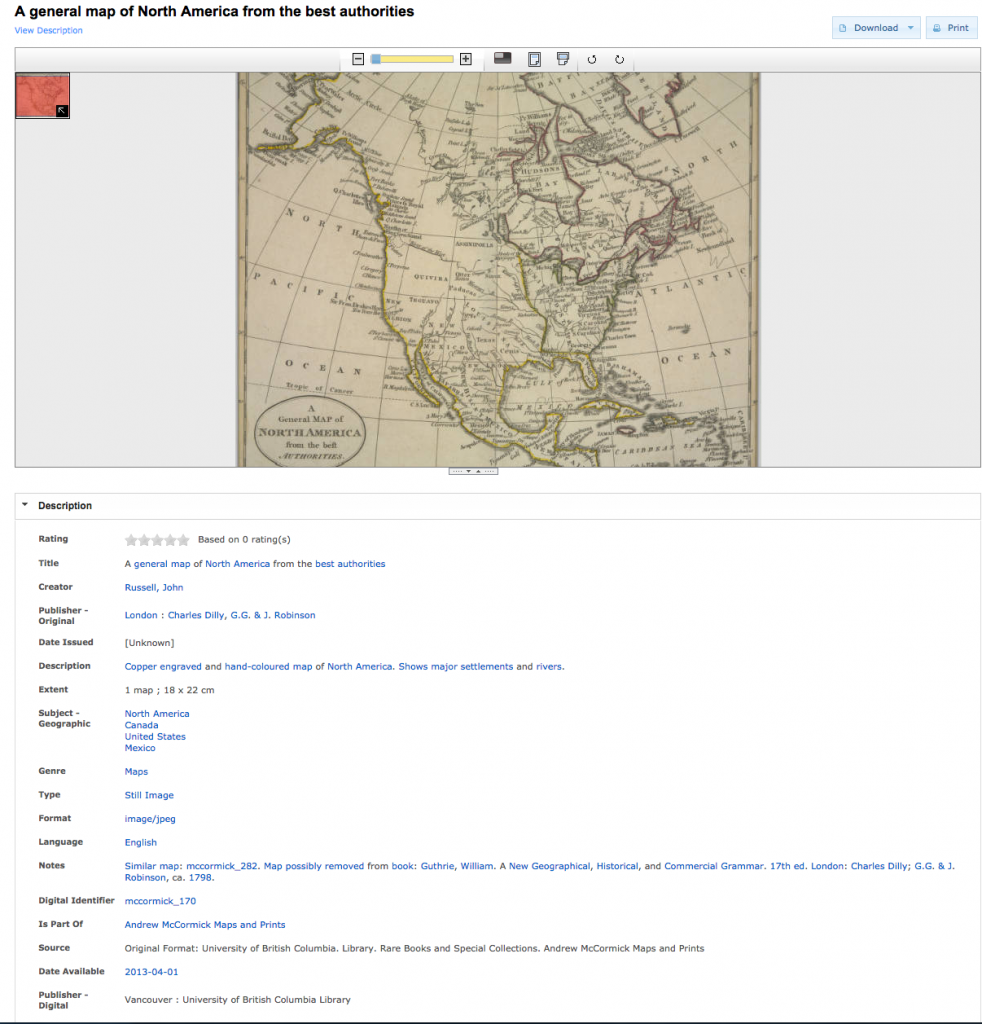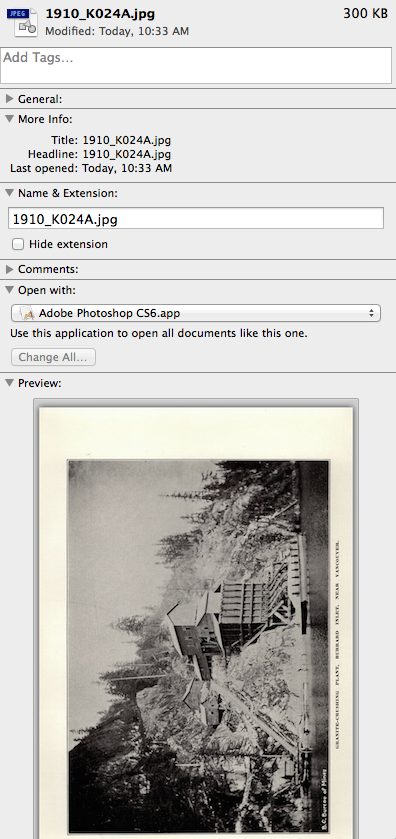Managing metadata might not seem like a glamorous task when working with digital materials, but it is one of the most important. Managing metadata means ensuring digital materials are identified, maintained, made accessible, made searchable and preserved over time so that the digital materials can be accessed in the future.
What is metadata?
The classic definition is: “metadata is data about data”. Our digital collections, for example, contain data (i.e. information) about the objects, which can include elements such as the creator of an object, the date or date range the object was created, the publisher and so forth. These fields (date, creator and so on) is data (information) about a particular object, document, photograph or object.
In the image below we have a snapshot of a digital object found on our digital collections webpage. Below the image is the metadata. This metadata provides users with additional information/data about the original digital object, which is the image. Click on the image to enlarge it.

Screen shot of “A general map of North America from the best authorities”
The digital object, the map, gives us information. It is a map of North America. On the map we can view different places, see borders, and so on. The additional information below the digital object, the metadata, provides further data about the digital object. It tells us the size, or extent of the map, in the note field we are given information on how to access similar maps, we are told which collection the map belongs to, the format of the image, etcetera.
Metadata can also be generated as we use technology. When we take a photograph of an object, or scan an object, information like the date and time of the image/scan and the machine we used and the settings are all bits of information added to the object. Thus, the data generated by the computer programs add data to the digital object.

In this screenshot, we can see the additional information generated by the computer and programs to show when the image was last opened, modified, and other information that can be pulled down when the tabs are opened (image is from the second phase of the BC Sessional papers going online in early 2015!)
Currently, the Digitization Centre is working on standardizing our metadata to make it more consistent throughout the collections and to ensure prolonged access and usability in the future.


